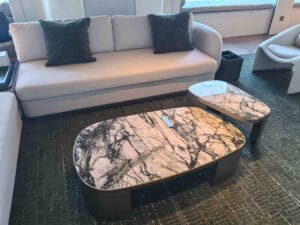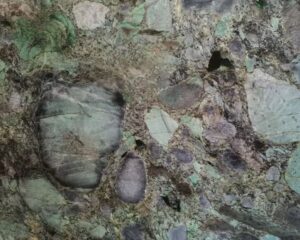“Xiaoshu reminds us: real heat doesn’t rush—it gathers with grace.”
On July 7, the Chinese lunar calendar marks Xiaoshu (小暑), the 11th of the 24 solar terms, known in English as “Lesser Heat.” As its name suggests, Xiaoshu signals the arrival of increasing warmth, but not yet the peak of summer. It is a transitional phase, a moment of buildup rather than climax—making it a time of both physical preparation and mental poise.
Though not a festival in the traditional sense, Xiaoshu is deeply woven into Chinese seasonal philosophy, agricultural planning, and daily life. It teaches us how to work with rising intensity—without losing balance.
🌿 What Does Xiaoshu Mean?
“Xiao (小)” means “small” or “lesser,” and “Shu (暑)” means “heat.” Combined, Xiaoshu refers to the period just before the most intense heat of the year, which typically comes in the following term, Dashu (Great Heat).
In ancient agrarian society, Xiaoshu marked an important time: crops like rice and corn were thriving, insects were active, and the air grew increasingly humid. Farmers had to work early in the morning to avoid heatstroke, while also preparing for the challenges of midsummer.
Philosophically, Xiaoshu teaches anticipation, not urgency. It’s about sensing the changes around you and preparing inwardly and outwardly.
🔍 Xiaoshu Traditions: Daily Wisdom in Seasonal Practice
Though more subtle than major holidays, Xiaoshu comes with time-honored customs, shaped by weather, rhythm, and well-being. Let’s explore several enduring traditions still observed in various parts of China:
1. Sun-Drying Herbs and Grains
July brings long daylight hours and strong sunlight, making Xiaoshu an ideal time to dry medicinal herbs, rice, and chili peppers. You’ll often see balconies and village courtyards filled with colorful produce laid out under the sun.
Why it matters: This tradition reflects strategic resource use—a concept that also applies to material selection in architecture. Natural stone, such as quartzite and marble, can be used to absorb, reflect, or store heat, depending on your design needs.
2. Eating Cooling and Detoxifying Foods
As the heat begins to rise, traditional Chinese diets shift to cooling and hydrating foods:
-
Mung bean soup to cleanse and cool the body
-
Winter melon stew for hydration
-
Lotus root dishes to strengthen the stomach and reduce internal fire
These food choices are not just culinary; they reflect an intimate relationship with seasonal wellness—a lifestyle that responds to nature rather than resists it.
3. Using Bamboo and Stone for Climate Comfort
While not an “official custom,” Chinese architecture during Xiaoshu often favors cooling materials. Houses in hot regions rely on bamboo screens, natural ventilation, and stone flooring to moderate indoor temperatures.
In modern design, materials like quartzito are prized for their thermal inertia, staying cool even in hot weather—perfect for villas, poolsides, and luxury resorts.
4. Cicada Listening & Rain Appreciation
In rural areas, people associate Xiaoshu with the sound of cicadas and the expectation of short, sudden rain showers. These environmental cues mark the rhythm of life—prompting adjustments in work hours and rest times.
This is also a reminder that design should respond to context. Just as nature shifts between heat and hydration, great architecture adapts through ventilation, texture, and shade.
5. Sending Summer Greeting Letters (昔日“暑帖”)
In ancient China, scholars and courtiers would exchange “Shutie (暑帖)”—handwritten summer greeting letters—to check in on friends’ health during the hotter months. These messages conveyed care and etiquette.
Today, this tradition survives in digital form, but the sentiment is timeless: in times of heat and pressure, a thoughtful gesture brings harmony.



🏛 Nature-Inspired Design: What Xiaoshu Teaches Us About Space
Xiaoshu is not dramatic. It doesn’t arrive with fireworks or feast days. Instead, it’s a quiet crescendo. A reminder that real preparation often happens in invisible ways—whether in nature, agriculture, or architecture.
No HRST PEDRA, we find deep design parallels in this season:
-
Cool underfoot, warm in tone: Our stone materials offer natural thermal relief while elevating aesthetic luxury.
-
Preparedness over performance: Projects that anticipate seasonal shifts—like sun exposure and humidity—age better and feel better.
-
Balance of hard and soft: Pairing natural stone with wood, water, and air brings out the best of each.
Whether you’re building a summer retreat or upgrading a wellness center, natural materials bring seasonal intelligence into every space.

💬 Final Thoughts from HRST STONE
The world moves fast—but Xiaoshu invites us to slow down just long enough to notice:
-
What’s heating up in your life or project?
-
What preparations will serve you later in the season?
-
What natural choices today will bring future resilience?
From our experience with international luxury projects—from Moroccan resorts to private estates in the US—we’ve learned that great design listens to the climate. Xiaoshu is a perfect seasonal teacher: it says, “Don’t fear the heat. Respect it—and get ready.“
📞 Connect with Us
Let HRST STONE be your partner in creating season-smart, culturally enriched, naturally beautiful environments.
📩 Email: assistant@hrststone.com
📱 WhatsApp: +86 13685922793
🔗 Website: www.quartzite-stone.com




